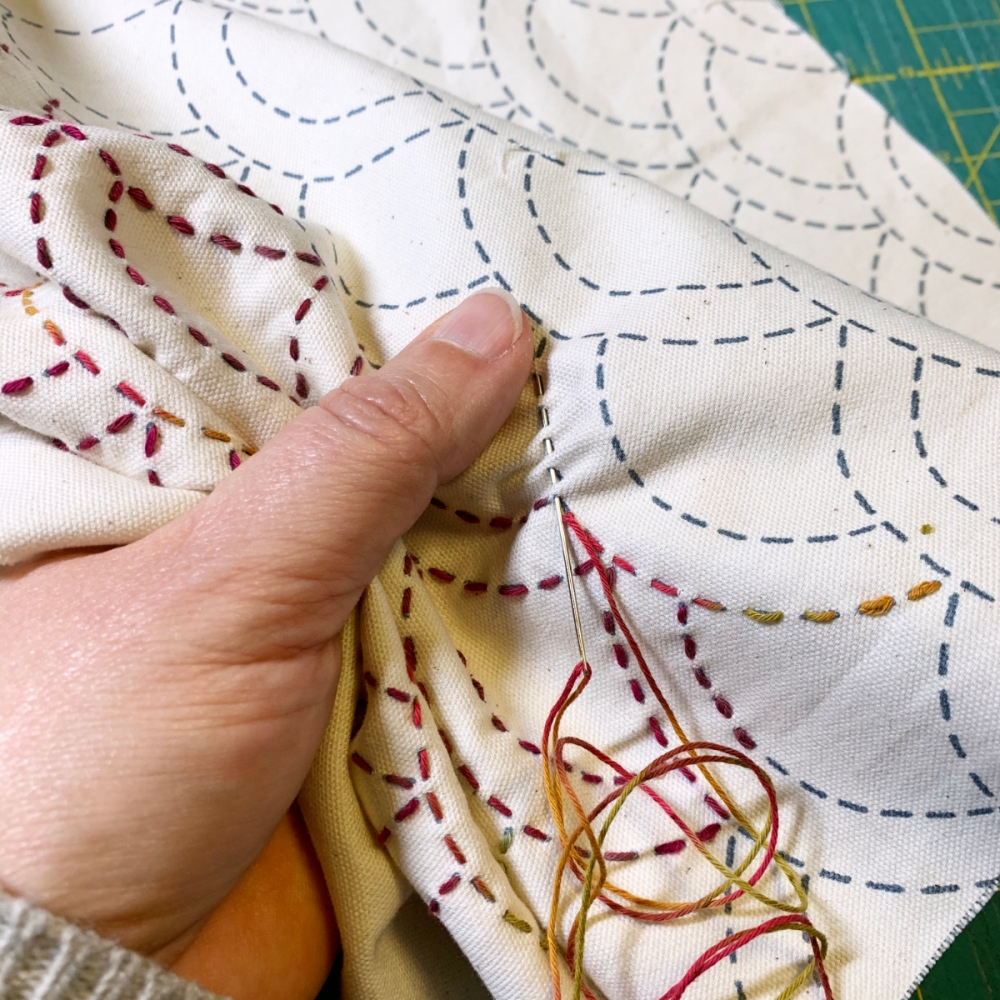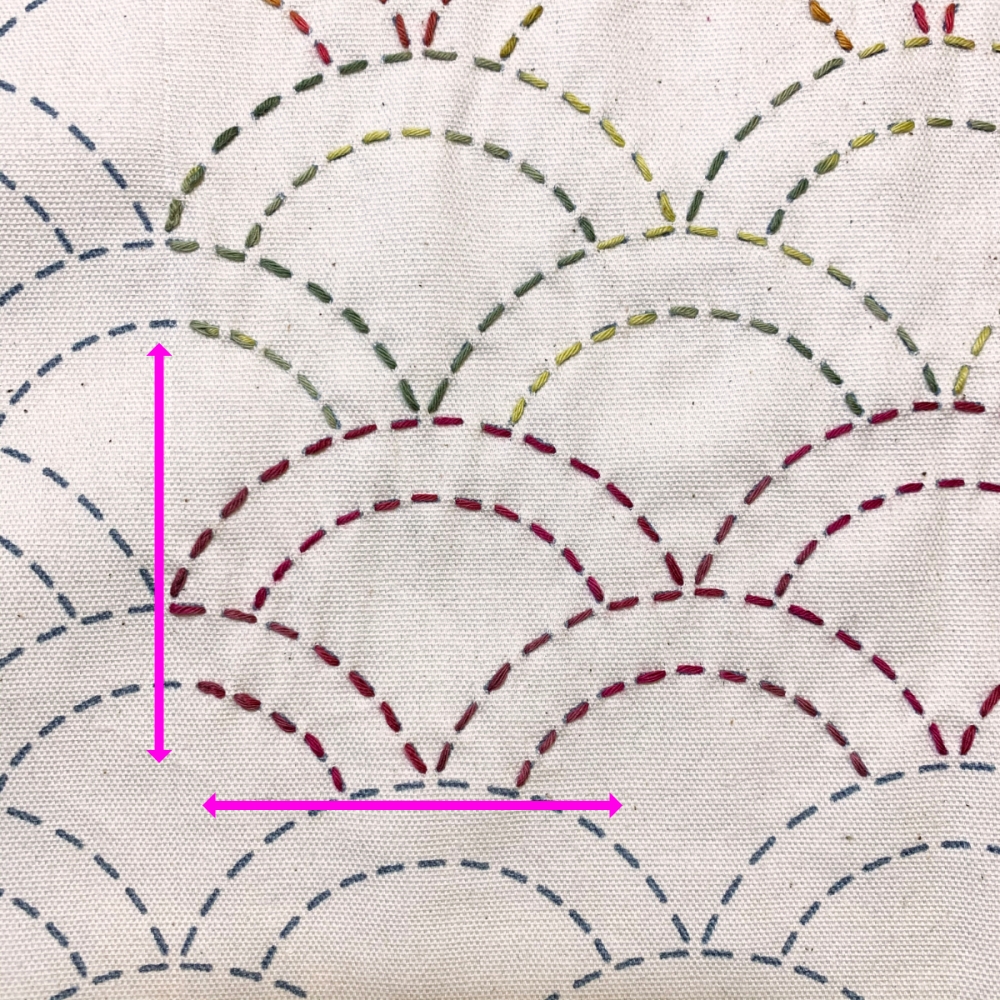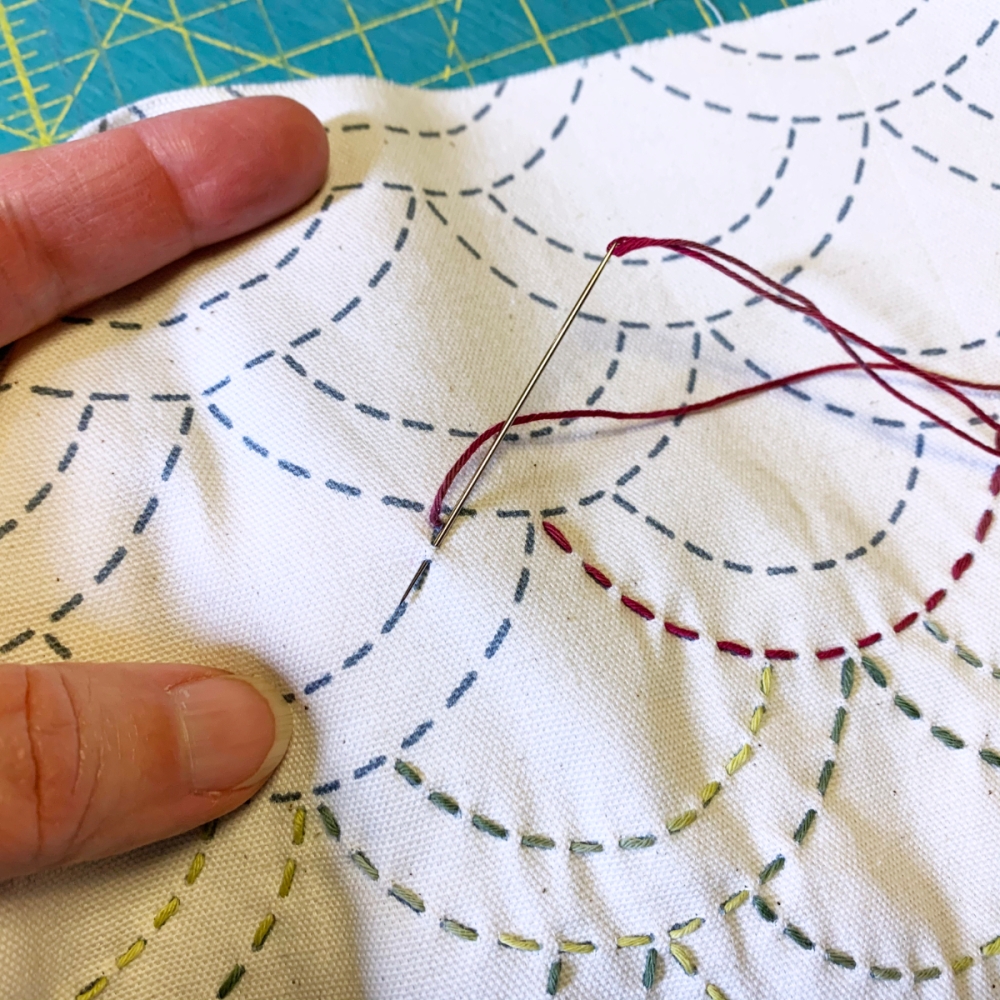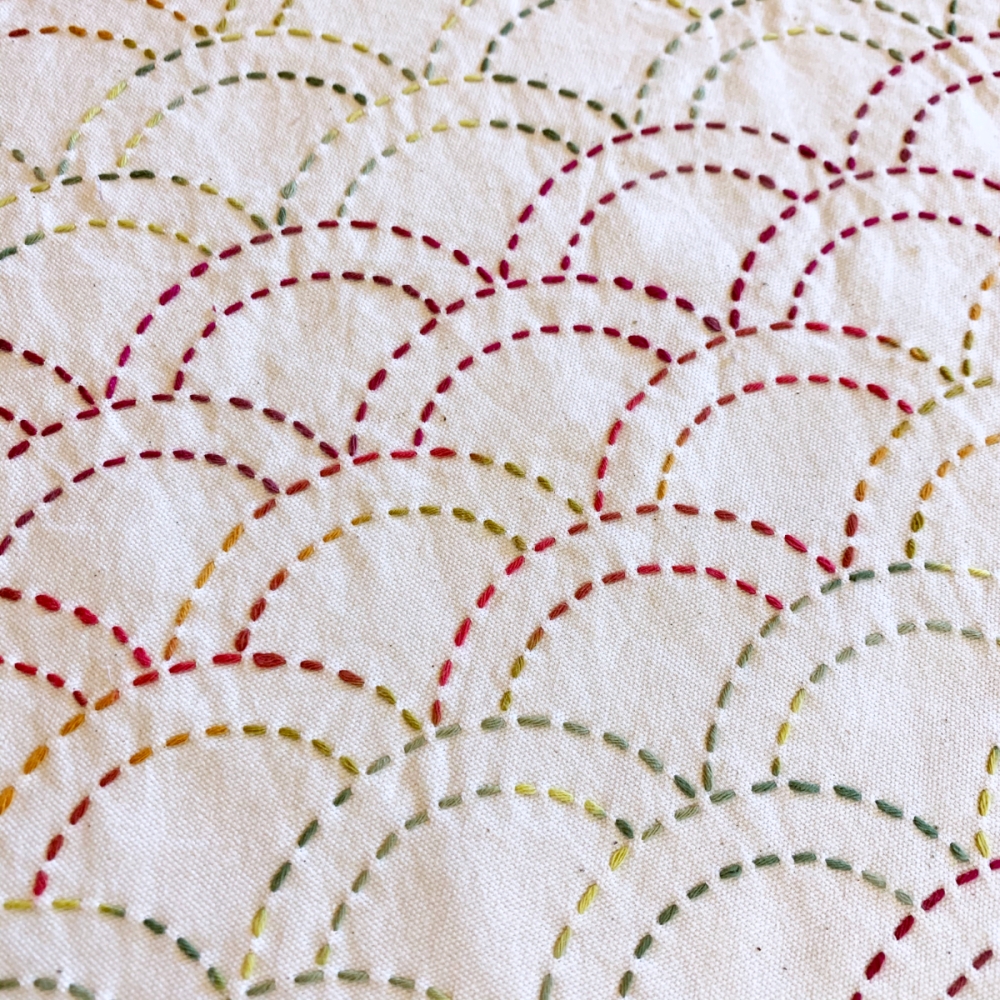My approach to stitching the traditional Seigaiha Wave design with variegated sashiko thread
There are many variations of Seigaiha – the ubiquitous Japanese wave design that consists of overlapping arches. Turn it upside down and you have fish or dragon scales. Add an extra line or two and you have rainbows. It’s pretty versatile and adaptable. Don’t have printed fabric? Trace around a circular object such as a small drinking glass.
For this project I used a pre-printed fabric with washout ink available in our shop. The threads are Olympus 20 meter skeins of variegated cotton sashiko thread in color #97 (red), #93 (orange) and #95 (green). (If any of these items are out of stock, contact us through our Etsy store to inquire about availability).
I cut a fat quarter (18″ x 22″) of fabric to start. The design is not printed all the way up to the selvedge, so I had a nice blank area to help me get a feel for how I wanted to frame it out. A fat quarter is big enough to make a placemat or small table runner, or use it as a block in a quilt.
I used a hera and ruler to mark the edges so I would know where to stop stitching and turn around. A hera is a great tool for marking straight lines because it only leaves a crease in the fabric. There’s no ink or other marks to worry about smudging or staining, and the crease will come out when you wash the fabric.

To start and finish each thread I usually backstitch rather than making a bulky knot. Try my mini tutorial on backstitching here. In the photo above I didn’t backstitch, but rather overlapped the end of one red thread with the start of a new one. The fuzzy thread is the end of the old one, and the blunt cut is the start of the new one. Overlapping two or more stitches like this secures the fibers in place.
You can see in the photos how these thread tails sit politely in the back and the front remains nice and smooth. Make sure you leave enough of a tail that they don’t pull out, maybe 1cm (~1/4 inch). Since most of my work ends up being for demonstration and handled by students and customers at quilt shows, I leave the back open so people can see the work and ask questions. If you prefer a clean back, you can use another fabric to back the piece.

There are different ways to connect the waves in the back. You can see my preference for skipping alternate rows so that each skip thread in the back is the same length, rather than doing one short skip and one long skip. Both are fine, I just prefer the balanced feel of the alternate row skip.
For this project I stitched two rows of red, two orange, two green, then repeated until I reached the bottom. This resulted in three row sets of red, two of orange, and two of green. Each skein was a short 20 meters, but there was thread left over once I completed the project as I had a total of 60 meters of thread to work with.
Once I had completed the stitching, the next step was to wash the fabric and remove the printed markings. I soaked the fabric in a basin of tepid water with some mild detergent for a few minutes until the ink had dissolved. After that I rinsed the fabric, wrung it out in a towel, let it hang dry for a while, and pressed it flat while the fabric was still damp. If you’re worried about damaging your stitches with the iron, use a tea towel between the iron and your fabric.
To finish the piece I rolled the hem in and stitched it down by machine, then pressed it again. The whole thing took a few days of stitching here and there when I had time, but it could easily be completed in a full day or weekend of stitching if you have the focus.
Could you use embroidery floss for this? Well, of course you could, but it wouldn’t look the same. Floss is meant to lie flat, whereas sashiko thread will puff up nicely. Perle is another option, but I find the texture isn’t quite right. When it comes to sashiko I prefer using Japanese tools and materials, all of which are available in the Kimonomomo Etsy Shop.










